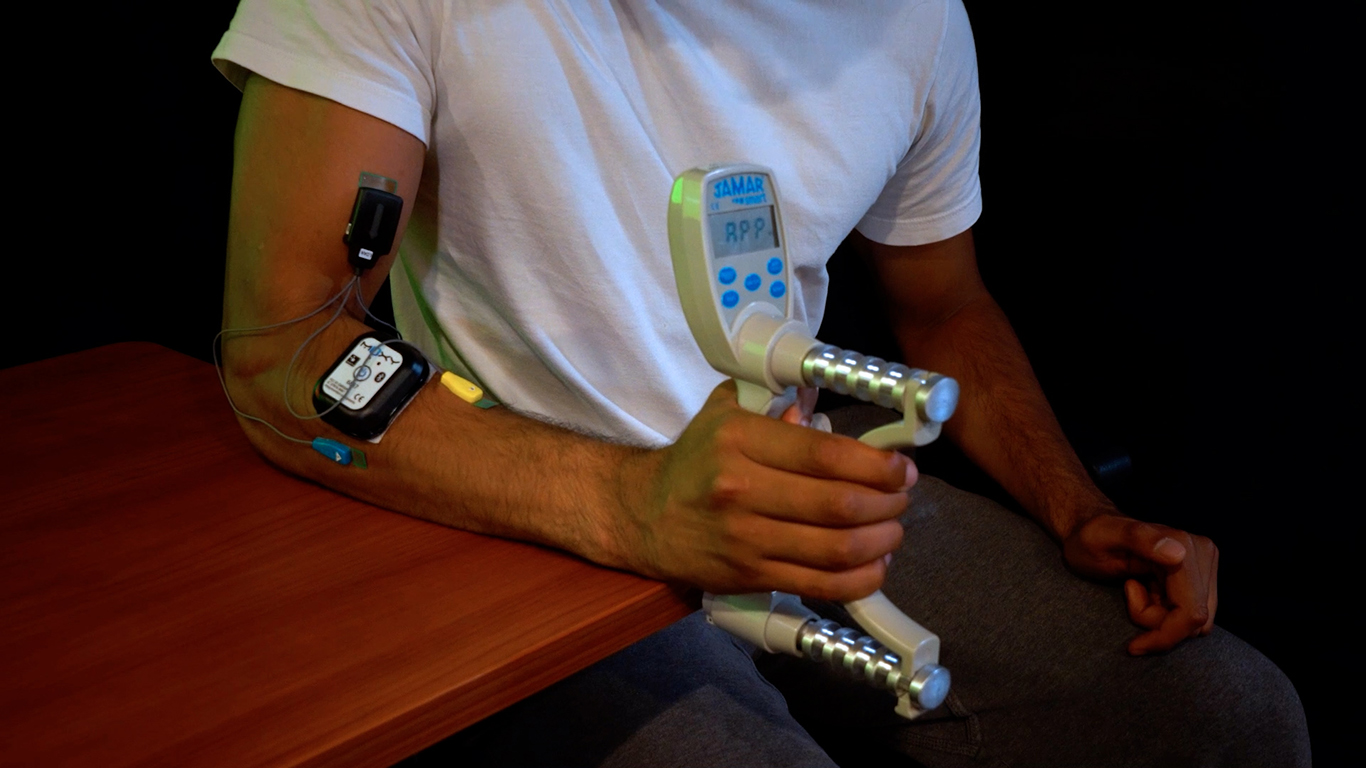Fear of falling has been proven to alter gait patterns and postural sway control. Electromyographic (EMG) signals demonstrate that, in the presence of a postural threat such as an elevated walkway, proprioceptors and the vestibular system do not function normally, causing distorted muscle activity including the co-contraction of muscles. This distortion of muscle activity makes it difficult to balance and perform normal gait when the probability of falling is increased.
Studies have found that the awareness of one’s surroundings and visual stimulation induce fear of falling, distorting the sensory system and immediately affecting the neuromuscular system.
At the University of Waterloo, a study1 (Silcher et al.) evaluated subjects standing on platforms of different heights with and without visual stimulation. The study concluded that as postural threat increased, muscle activity in the tibialis anterior muscles correlated directly with increased stiffness.
keywords: postural threat, fear of falling, postural sway control, electromyography, gait, vestibular system, neuromuscular system


For the past decade, Dr. Loram’s group at Manchester Metropolitan University has dedicated their research to human locomotion. They have used EMG signals to examine lower-limb muscle contributions to postural sway, cautious gait2, whole body vibrations3, and the flexibility of the postural system4.
In their most recent study5, Dr. Loram and his group researched the affect a postural threat can have on the vestibular system. Subjects were required to stand on an elevated walkway 22 centimeters wide and 3.85 meters above the ground. These results were compared to a walkway at ground level.
Multiple sway parameters were measured including the galvanic vestibular stimulation. EMG signals were recorded bilaterally from the subjects’ medial gastrocnemius and tibialis anterior muscles using a Delsys Trigno™ Wireless EMG System, and compared to the same signals measured when the subject stood at ground level. The raw signals were collected in EMGworks®. A co-contraction index (CCI) was created from EMG data to identify muscle stiffness in the ankle joint. A linear relationship between the CCI and skin conduction was determined, meaning with increased nervous system activity came increased joint stiffness.
Monitoring lower limb muscles can provide understanding of postural sway control and gait during a postural threat. Dr. Loram shows abnormal co-contraction of muscles leads to increased muscle and joint stiffness, thereby adversely affecting balance and gait in the presence of postural threats.
Delsys EMG Systems feature wired and wireless surface EMG sensors designed to produce a consistent EMG signal with low muscle crosstalk and reduced motion artifact. The wireless sensors are an ideal choice for recording EMG signals during postural control and gait tests because they allow the subject complete freedom of movement.
The EMGworks® software can be used to both acquire and analyze EMG signals. EMG signals can be normalized and low-pass filtered to create co-contraction indices, as used in Dr. Loram’s study.
EMGworks® also supports a number of other applications including gait analysis, motor learning, muscle performance, and muscle fatigue.
Stand on an elevated walkway
Stand on a ground level walkway
Sway response
Muscle co-contraction
Skin conduction
16 sensor Trigno™ Wireless EMG System
16 channel Bagnoli™ Desktop EMG System





